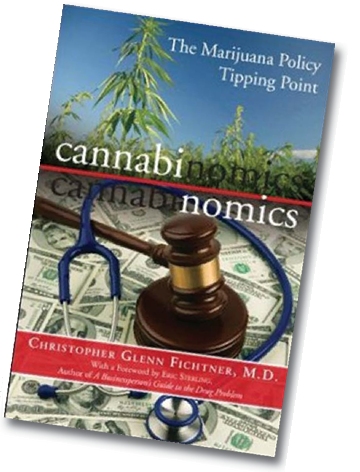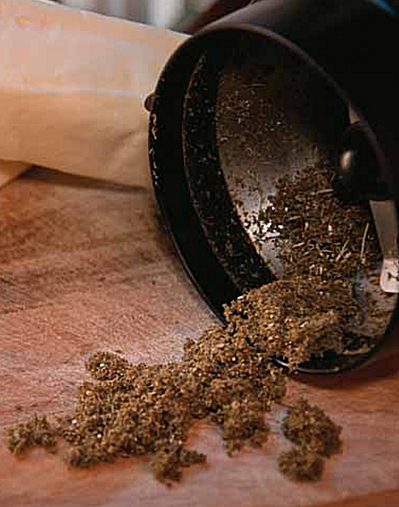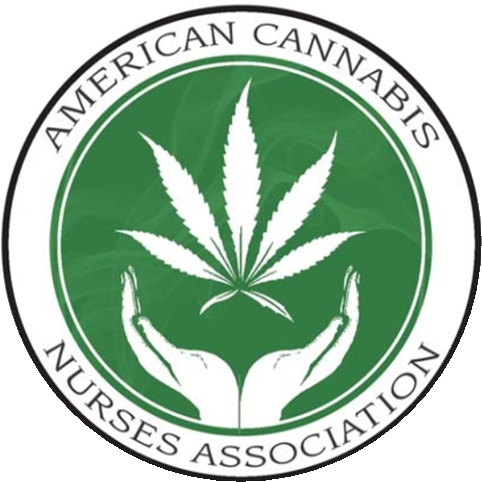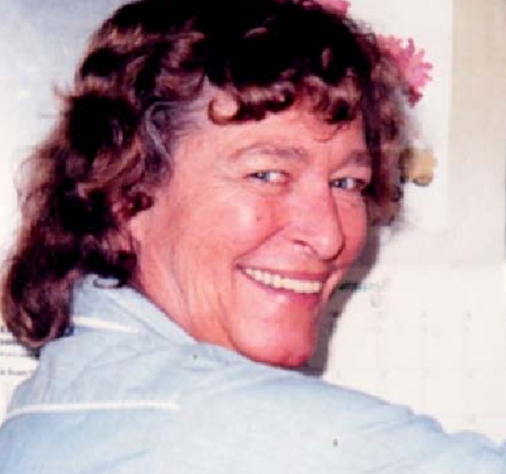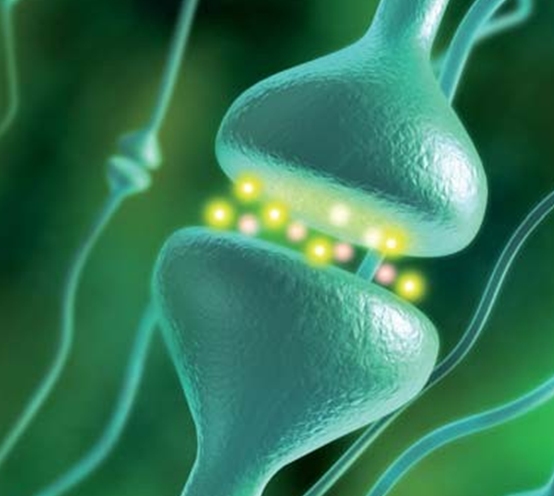
The Science of Cannabis Leads in Many Directions
The Evolution of a Sense of Well-Being

By Mary Lou Smart
www.medicalcannabisart.com
While speaking at Patients Out of Time’s Seventh National Clinical Conference on Cannabis Therapeutics in April, Bryan Krumm, the psychiatric nurse practitioner
who pushed to include post-traumatic stress disorder (PTSD) as a qualifying condition in New Mexico’s med- ical marijuana program, reviewed research that supports cannabis as a therapeutic agent. He also cited his own patient cases, which correlate with the conclusions of the studies. Studies he mentioned included one published in 2011 concerning 1991 Gulf War Veterans showing that alcohol abuse has been significantly linked to PTSD, and cannabis has been shown to act as a substitute for alco- hol. He cited Dr. Tod Mikurya’s well-known work with cannabis as a harm-reduction approach as a substitute for alcohol. Mikurya, deceased, often spoke of studies as far back as the 1880s (Birch, Indian Hemp Drugs Commission Report) showing that cannabis was a more gentle approach, and that patients weaned off of alcohol with opiates would then turn to cannabis to kick the sub- sequent opiate addiction.
Amanda Reiman, PhD, MSW, also spoke at the conference. As Director of Research and Patient Services of Berkeley Patients Group in California, she has seen first-hand that the active compo-
nents in cannabis
show promise in treating addiction
via the body’s own messaging system. She reported that California’s system of
dispensaries is a wonderful resource for
tracking anecdotal evidence. A medical cannabis survey to determine how the patient population is using
cannabis revealed that 68.9 percent use it as a substitute for
prescription medication; 81.1 percent report
that it is very effective; and
that 85.9 percent of those surveyed who
have tried to reduce usage have been successful. One case study with a San Francisco
dispensa-
ry working in conjunction with Berkeley Patients Group and patients that use methamphetamine has found that cannabis seems to have a role in reducing use of other, more harmful, substances.
One implication of feedback from the patient population and dispensary studies, Reiman said, is that “the pallia- tive effects of cannabis can assist in reducing cravings and the chance for relapse while providing a safer psychoac- tive substitution.”
Cannabis has been shown to elevate dopamine, a neuro- transmitter that plays a role in reward-driven learning. When we are rewarded, we like to repeat the experience. Some are more prone than others to repeat, and form habits with, rewarding experiences, which can lead to addictions. Many substances, chocolate and sugar for instance, make us feel good, but not many will take our minds away from addictive behavior. The real question is what is going on with this plant that can take people’s attention away from neuro-reward-seeking, addictive behavior?
Scientists have long tried to understand why compounds such as those found in cannabis have such an effect on humans.
In 1992, Raphael Mechoulam, an Israeli professor of Medicinal Chemistry and Natural Products at the Hebrew University of Jerusalem, first described the body’s own endogenous cannabi- noid transmitter, anandamide, which scientists in his lab had isolated. Taken from the Sanskrit word ananda, meaning bliss or delight, its effects are mediated by clus- ters of CB1 and CB2 cannabinoid receptors, which are found in the brain and throughout the body.
Even the U.S. government, however, has studies that point to incredible benefit. Thanks to work by renowned researchers, its patent #6,630,507 B1 entitled Cannabinoids as Antioxdants and Neuroprotectants, owned by the United States of America as represented by the Department of Health and Human Services, has been a boon to cannabinoid research, raising awareness into the usefulness of cannabinoids in treating myriad oxidation-associated diseases, including inflammatory and autoimmune diseases, and as neuroprotectants.
In 1995, Professor Vincenzo Di Marzo, PhD, research director at the Institute of Biomolecular Chemistry of the National Research Council, in Naples, Italy, another of the world’s leading cannabinoid scientists, coined the term
endocannabinoid (eCB) for these compounds that inter- act with cannabinoid receptors. From this came the endo- cannabinoid system as the identity of the whole shebang, including the receptors, their ligands, and regulation of related enzymes and proteins. The new study of the body’s eCB system has contributed to fresh insight into brain and body functions. Speaking at Patients Out of Time’s conference, Di Marzo reviewed the complexity of the system, along with recent scientific developments, and noted that its activation might have positive implications for stress, recovery and adaptation.
Following the isolation of anadamide and the eCB system in the 1990s, scientists worldwide set out to identify and understand why receptors allow the active components in cannabis to bind to the nervous system, setting off reac- tions that reduce pain and anxiety and produce feelings of well-being, ranging from calm to euphoria. While some studies show that by interacting with overly- charged areas of the brain, components in cannabis can help those who suffer from anxiety disorders such as post-traumatic stress and even stuttering, others reveal that too much cannabis, or a THC-rich strain, can result in anxiety.
Because of the Controlled Substances Act’s Schedule I status of cannabis as a substance with no medical benefit, the majority of the research funded by the United States has been motivated by questions of how and why marijuana poses risk to human health in areas primarily of mental health and addiction. Even the U.S. government, however, has studies that point to incredible benefit. Thanks to work by renowned researchers, its patent #6,630,507 B1 entitled Cannabinoids as Antioxdants and Neuroprotectants, owned by the United States of America as represented by the Department of Health and Human Services, has been a boon to cannabinoid research, raising awareness into the usefulness of cannabinoids in treating myriad oxidation-associated diseases, including inflammatory and autoimmune diseases, and as neuroprotectants.
Following revelations by Mechoulam and his colleagues, many studies focused on anandamide. While 1980s research revealed that endorphins, the body’s morphine, were elevated in blood samples following heavy exercise, subsequent studies downplayed the role of the endor- phins in producing the “runner’s high,” suggesting that endorphins in the blood stream after exercise might not be the reason for the mental “high.” Instead, a growing body of research suggests that the eCB system is the gate- keeper for our natural sense of well-being following heavy exercise. ECBs, the body’s own cannabinoids, are made of lipids, molecules that pass through the body’s blood / brain barrier with ease.
One scientist, Greg Gerdeman, PhD, turns to evolution for a better under- standing of what might be producing feelings of well-being following exer- cise. He is not alone in this endeavor, as a long line of scientists have studied the role that evolution might have played in shaping our abil- ity to produce substances that might help in warding off or ignore pain to prevent starvation during the difficult, exhausting work of hunting for and gathering food 10,000 years ago.
His work has centered on how the cannabinoid receptors in the eCB neurotransmitter system — the same system that cannabis interacts with — influence learning, behav- ior and even drug taking.
To examine whether there are differences in exercise- induced eCBs, and whether these levels differ across species, he and other scientists designed an endurance exercise study. Recently published in The Journal of Experimental Biology, a leading journal in comparative animal physiology, the study was made possible by a National Science Foundation grant written by Gerdeman, David Raichien, a biological anthropologist at the University of Arizona, and Andrea Giuffrida, a pharma- cologist with expertise in the biochemical detection of eCBs in biological samples.
“Cannabis has been so intensely studied over the past 20 years that we know a great deal about the cellular physiology of why cannabis can be anti-inflammatory, anti-spasmodic, neuroprotective, and may even help to regulate insulin and blood sugar in some individuals,” he said. “Why the plant evolved to develop the cannabi- noids in the first place almost certainly had nothing to do with humans, but is instead the result of a series of adaptations for its own protective purposes. For what- ever reasons, the compounds that evolved to protect the plant at some point became favorable to humans as well, probably relatively recently, several thousand years ago.”
The study looked at two natural athletes – humans and dogs – and a species not taken to heavy exercise, ferrets. The study was an offshoot of earlier research. While at Harvard University, Raichien had studied with Professor Daniel Lieberman who was interested in the theory that humans evolved to be distance runners. To see if there might be a relationship between eCB signaling and behavioral habit formation, scientists designed an exper- iment where recreational runners and dogs were trained to run and walk on a tread mill. Blood samples were col- lected before and after the exercise. Because they were not as cooperative as their study mates, the ferrets’ blood samples were collected either after exercise or while they were sleeping.
The test did reveal a spike in anandamide in the active participants, in blood samples following high-aerobic activity. The low-activity ferrets did not produce anan- damide. The runners said that they felt good after exer- cise. The takeaway from this study, and possibly the rea- son it was covered by a prestigious research journal and other leading publications including National Geographic, The New York Times, and The Economist, is that evolution might have played a role in seeing that humans and other animals that walk and run over long distances receive some type of reinforcement that would make them want to repeat the behavior.
“Ours is only one
of several lines of evidence suggesting that eCB signaling may underlie some of the physiologi-
cal benefits,” said Gerdeman in
a recent interview. “Future studies could work to elaborate what specific exercise regimens might
maximize therapeutic outcomes of activating
the cannabinoid receptors, such as
treatment of depression, for example.”
At Eckerd College in South Florida, Gerdeman’s research delves into the evolution of our own reward systems. In the brain, CB1 and CB2 receptors regulate activity. CB1 receptors are primarily involved with the nervous system. CB2 receptors are primarily found in the immune system. Primarily but not completely, because when it comes to these receptors, there is no black and white. CB1 and CB2 were not always encoded by two different genes in the DNA. Way back when, in a whole phylum of verte- brates, an ancient event of mega-proportions caused the entire ball of wax, or genome, to morph from one to two genes. The thinking is that CB1 and CB2 emerged from a single gene at that time.
To better understand, Gerdeman looks to a basic model, the ancestors of vertebrates, one being the Florida lancelet. The small invertebrate sheds light on the evolu- tionary origin of the vertebrates, and comes with basics like a tiny, brain-like communicator, a food canal and blood system, mouth, nerves, stomach and dorsal nerve. With the Florida lancelets, he and his students can inves- tigate the evolutionary roots of the cannabinoid recep- tors. These fish-like creatures split from vertebrates 600 million years ago, and it is unknown whether they have a base-model eCB system.
By entering the field of endocannabinoids and the neuro- biology of addiction in its infancy, Gerdeman has had the opportunity to participate in emerging research.
“Neuro circuits within the brain regulate themselves with endocannabinoids, among other things, and that was totally unknown when I entered graduate school in 1995,” he said. “Much of my work is the more basic sci- ence of trying to understand our native neurotransmitters, the endocannabinoids, and how they work to regulate neuro communication.”
While Gerdeman does not use cannabis in his research, the science of our eCB system has its roots in the relation- ship between cannabis and humans. While not an expert on the evolution of the plant, he offers that cannabis was bred over time to fill any number of needs.
“Cannabis has been so intensely studied over the past 20 years that we know a great deal about the cellular physiology of why cannabis can be anti-inflammatory, anti-spasmodic, neuroprotective, and may even help to regulate insulin and blood sugar in some individuals,” he said. “Why the plant evolved to develop the cannabinoids in the first place almost certainly had nothing to do with humans, but is instead the result of a series of adaptations for its own protective purposes. For what- ever reasons, the compounds that evolved to protect the plant at some point became favorable to humans as well, probably relatively recently, several thousand years ago.”


